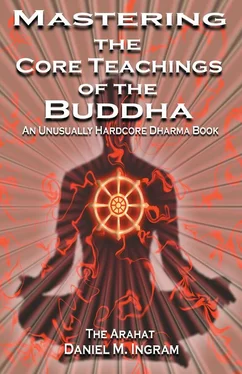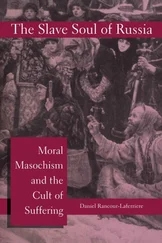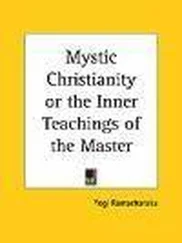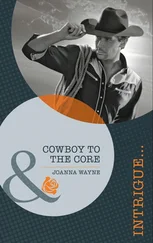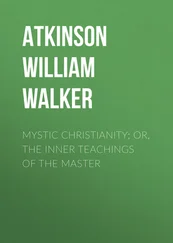Daniel Ingram - Mastering the Core Teachings of Buddha - An Unusually Hardcore Dharma Book
Здесь есть возможность читать онлайн «Daniel Ingram - Mastering the Core Teachings of Buddha - An Unusually Hardcore Dharma Book» весь текст электронной книги совершенно бесплатно (целиком полную версию без сокращений). В некоторых случаях можно слушать аудио, скачать через торрент в формате fb2 и присутствует краткое содержание. Год выпуска: 2009, ISBN: 2009, Издательство: Aeon Books, Жанр: Старинная литература, на русском языке. Описание произведения, (предисловие) а так же отзывы посетителей доступны на портале библиотеки ЛибКат.
- Название:Mastering the Core Teachings of Buddha - An Unusually Hardcore Dharma Book
- Автор:
- Издательство:Aeon Books
- Жанр:
- Год:2009
- ISBN:9781904658405
- Рейтинг книги:5 / 5. Голосов: 1
-
Избранное:Добавить в избранное
- Отзывы:
-
Ваша оценка:
- 100
- 1
- 2
- 3
- 4
- 5
Mastering the Core Teachings of Buddha - An Unusually Hardcore Dharma Book: краткое содержание, описание и аннотация
Предлагаем к чтению аннотацию, описание, краткое содержание или предисловие (зависит от того, что написал сам автор книги «Mastering the Core Teachings of Buddha - An Unusually Hardcore Dharma Book»). Если вы не нашли необходимую информацию о книге — напишите в комментариях, мы постараемся отыскать её.
Mastering the Core Teachings of Buddha - An Unusually Hardcore Dharma Book — читать онлайн бесплатно полную книгу (весь текст) целиком
Ниже представлен текст книги, разбитый по страницам. Система сохранения места последней прочитанной страницы, позволяет с удобством читать онлайн бесплатно книгу «Mastering the Core Teachings of Buddha - An Unusually Hardcore Dharma Book», без необходимости каждый раз заново искать на чём Вы остановились. Поставьте закладку, и сможете в любой момент перейти на страницу, на которой закончили чтение.
Интервал:
Закладка:
273
Models of the Stages of Enlightenment
A far more practical approach is to accept that we are human, try to be decent in a normal sort of way rather than in a grandiose spiritual way, and to assume that reducing and eliminating the illusion of the dualistic split is possible through doing basic insight practices. Reducing the sense of a split can provide more clarity, allowing us to be the human beings that we are with more balance and less reactivity in the face of that humanity.
THE THERAVADA FOUR PATH MODEL
The root of the problem in standard Buddhism comes to us from the Theravada Four Path Model. This is the original model presented in the Pali Canon and the oldest model we have to work with. All the subsequent schools (Mahayana of various strains and the Vajrayana) react to it in their way but are still influenced by it even if they say they are not, so you need to know it to understand the debate.
Actually, the problems began long before in ancient Hinduism (which had a huge impact on Buddhism, despite what some Buddhist will tell you) and probably before that, but this is as good a place to start as any. I shouldn’t blame ancient India for what is really a perennial human wish. Let’s face it: we all want emotional perfection, as a large chunk of the pain felt in modern life relates to people’s emotions causing trouble. I will claim that not perceiving our emotions clearly is a far greater problem than the emotions themselves, but I am clearly in the minority in this regard. As I stated in the chapter called Harnessing the Energy of the Defilements, there is a lot to be said for aspects of what we usually consider the bad emotions. It is important to realize that empty compassion underlies all our emotions, whether filtered through the illusion of duality or otherwise.
The Theravada Four Path Model is a model involving four stages of awakening, namely First Path or Stream Entry (Pali: sotapanna), Second Path or Once Returner (sakadagami), Third Path or Never Returner (anagami) and finally Fourth Path, Holy One, Saint, or Conqueror (
arahat, arhat, arahant, or arhant, pick your favorite spelling). The terms Once Returner and Never Returner have to do with issues relating to the dogma that those who have attained to second path cannot be reborn more than once before attaining arahatship, and certainly not in the lower realms (hell realms, hungry ghost realms or animal realms), 274
Models of the Stages of Enlightenment and that those of third path, if they do not attain to arahatship in this lifetime, will at worst be reborn into a heaven realm where the conditions are optimal for achieving enlightenment. However, the core of the Theravada Four Path Model is the dogma that enlightenment involves progressively eliminating the Ten Defilements in the following manner.
Stream Entry eliminates the first three defilements: skeptical doubt, attachment to rites and rituals, and personality belief. Second Path attenuates the fourth and fifth defilements, usually translated as greed and hatred or more technically as attraction and aversion to everything that is not a jhanic state. Third Path is said to eliminate those same fourth and fifth defilements however translated. Fourth Path, that of arahatship, eliminates the remaining five defilements of attachment to formed jhanas (the first four jhanas), attachment to the formless realms (the second four jhanas), restlessness and worry, “conceit” (in quotes because it is a bit hard to translate), and something called “the last veil of unknowing”.
It is important to note that arahats that are said to have “eliminated conceit” (in limited emotional range terms) can appear absolutely arrogant and conceited, as well as restless or worried, etc. That there is no fundamental suffering in them while this is going on is an utterly separate issue. That said, conceit in the conventional sense and the rest of life can cause all sorts of conventional suffering for arahats just as it can for everyone else. While I am on the subject of conceit, perhaps I should take on the subject of the word “ego” in a more comprehensive way than I have done so far.
The pop psychology meaning of the word “ego” is something like arrogance, pride, narcissism, and a failure to take into account the feelings, rights and/or existence of others. This is also the definition that is the most commonly behind such mainstream Buddhist statements as,
“That action or statement that I really didn’t like had a lot of ‘ego’ in it.”
I think that this definition of ego can sometimes be slightly useful for training in morality if we are very kind to ourselves and those around us, but often it seems to me to be pop spirituality turned into a weapon and a form of denial of someone else’s difficulties, feeling and suffering.
275
Models of the Stages of Enlightenment
Worse, people often take this definition, mix it in with their own insecurities and unfortunate fear of existing or asserting themselves in the conventional sense, and then take this neurotic mixture and use it to continue to flog themselves and those around them. Please don’t do this. It is misguided and will not help you or anyone. This pop psychology definition of ego also has nothing to do with enlightenment in the formal sense, and so don’t bring it to mind when you read this chapter except to dismiss it.
Another definition of ego is the formal psychological one put forward by Freud. In this definition, ego is the moderator between the internalized parent or police of the super-ego and the primal drives of the id, those being largely for reproduction and survival. In this sense, ego is an extremely good thing and should be cultivated consciously and without restraint. This definition has to do with the more formal psychological concept of “ego strength,” a strength that is very positive and necessary for the deep and often difficult personal growth that we all want for ourselves. One of the explicit requirements for entering intensive psychoanalysis is high ego strength, the ability to face one’s reality and dark stuff without completely freaking out. Thus, eliminating this form of ego would be a disaster.
For reasons completely beyond me, the word “ego” is also used in a high mystical sense to describe the elimination of the experiential illusion of there being a special reference point as described in the chapter on the Three Characteristics in the section on no-self. One who had eliminated this form of ego, which is in this case a useless illusion, might describe their experience in this way, “In this full field of experience or manifestation, there seems to be no special or permanent spot that is observing, controlling, separated from, or subject to any other point or aspect of the rest of this causal field of experience or manifestation.”
This is the experience and realization of the arahat. Notice that this definition of ego seems to have nothing whatsoever with the other definitions of ego. This is exactly the point, and so I strongly advocate never using the word ego in the context of describing realization or the goal of the spiritual life, or at least not doing so without extensive explanation of this particularly special and uncommon usage of the 276
Models of the Stages of Enlightenment term. Those who do otherwise continue to cause an astounding amount of unrealistic, disempowering and life denying thinking in mainstream Buddhists. It is my sincere wish that the misuse of the word ego and its associated negative side effects stop immediately and forever. Back to the models…
As the Theravada Four Path Model explicitly states that realization is all about eliminating greed, hatred, restlessness, worry, etc., this is as explicitly a limited emotional range model, and, as expected, deserves some serious skepticism. In fact, this is a good time to go into what I love and despise about the Theravada. I absolutely love their emphasis on the Three Characteristics, love the astounding power of their techniques and am grateful beyond words for the maps they provided me for the territory before stream entry, however incomplete and idealized. I am profoundly grateful, at times to the point of tears, and I mean that, for the monasteries I got to sit in, for their preservation of that which is true and useful in Buddhism for 2,500 years, and for the chance to have sat with real, enlightened teachers because of their perseverance and work.
Читать дальшеИнтервал:
Закладка:
Похожие книги на «Mastering the Core Teachings of Buddha - An Unusually Hardcore Dharma Book»
Представляем Вашему вниманию похожие книги на «Mastering the Core Teachings of Buddha - An Unusually Hardcore Dharma Book» списком для выбора. Мы отобрали схожую по названию и смыслу литературу в надежде предоставить читателям больше вариантов отыскать новые, интересные, ещё непрочитанные произведения.
Обсуждение, отзывы о книге «Mastering the Core Teachings of Buddha - An Unusually Hardcore Dharma Book» и просто собственные мнения читателей. Оставьте ваши комментарии, напишите, что Вы думаете о произведении, его смысле или главных героях. Укажите что конкретно понравилось, а что нет, и почему Вы так считаете.
